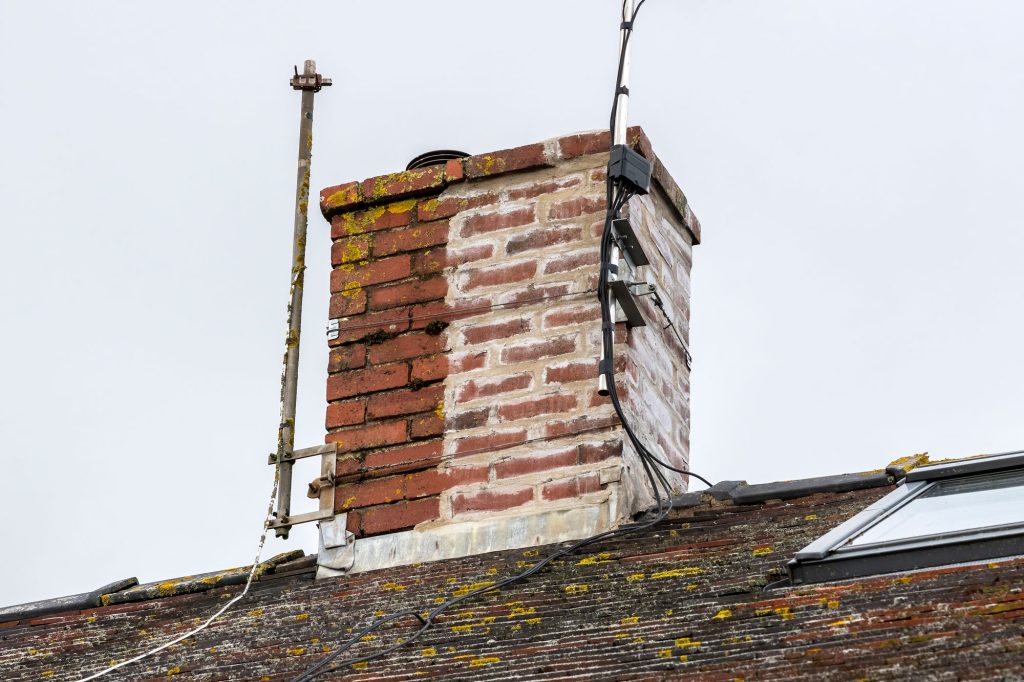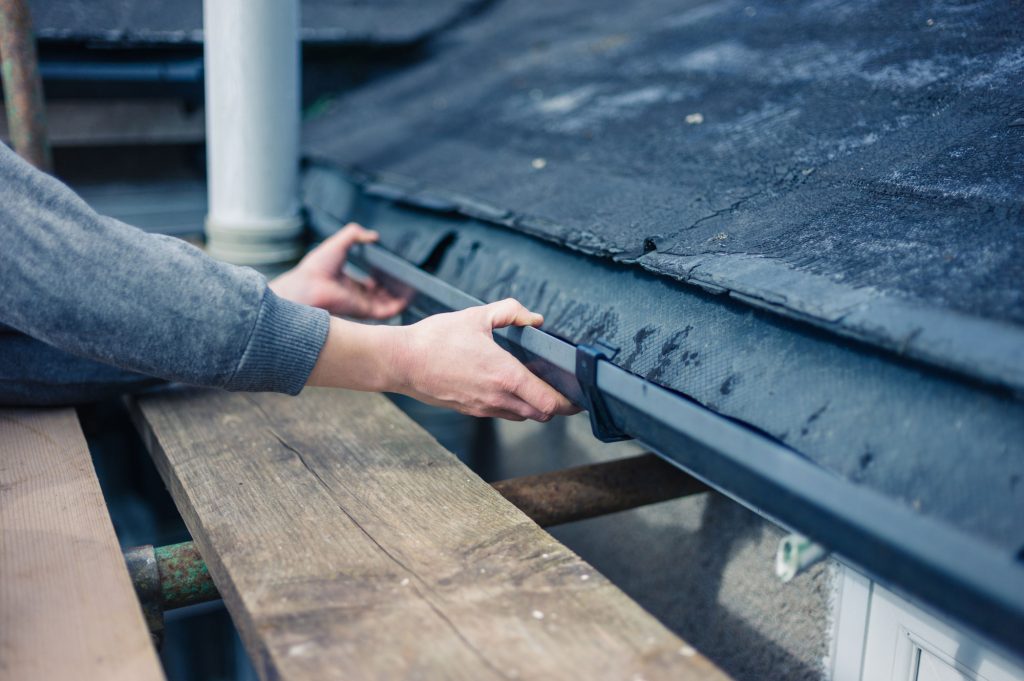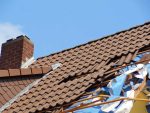Tips to keep your home structurally sound
Whether it be preventative measures or proactive measures to secure your home’s structural soundness, it’s important to know what’s involved in keeping your home and its occupants safe.
Here are the five top tips for keeping your home structurally sound.
1. Watch out for signs of structural issues
It’s important to keep an eye out for any evidence of structural issues with your home. One of the most obvious examples is cracks.
Cracks and signs of crumbling can appear in chimneys, walls, ceilings, household foundations and elsewhere. Growing cracks are especially concerning, but really any cracks should be taken seriously.
If you notice any cracks or crumbling, hire a suitable professional (e.g., qualified surveyor, chartered engineer or registered architect) to come out and take a look. It goes without saying that if there are any structural issues, you’ll need to have them addressed as soon as possible.
Other signs of structural issues include water leaks/water infiltration and uneven finishes. You may notice leaks or water damage when it comes to water-related problems. If a leak continues to the roof, it can lead to instability, posing a structural danger. This may not even take very long to occur for heavy leaks, so if you see any signs of water leakage/infiltration, hire a plumber immediately.
Lastly, uneven finishes can also point toward issues with your home’s structural integrity. For example, watch out for bulging floors/doors. Also, if you spot windows that aren’t sitting level in their frames anymore, you should call out a suitable professional promptly.
2. Have damaged floor joists replaced
As the wood deteriorates, it loses its strength and durability. Therefore, replacing any floor joists if they are damaged or worn down or if you are otherwise concerned about the strength and other qualities is important.
Floor joists are important for your home’s structural integrity, considering that these beams are used to hold up the property while transferring weight from higher up down to the property’s very foundations. We recommend hiring a professional to address these issues, especially as they may not even be safely accessible for a DIYer. Moreover, hiring someone who knows exactly what is involved for safety reasons and to ensure the best outcome possible is important.
3. Repointing your property
You should have your home repointed once every 5-10 years. This involves renewing the finish between bricks or stone used to construct a property. Ultimately, having your house repointed can help maintain how structurally sound it is.
As mortar deteriorates with time, cracks can occur, and bits may even chip or fall off. Repointing not only improves the look of your home’s exterior but protects it from the elements and ultimately reduces the chance of structural issues arising over time.

4. Replacing your guttering
Poor or worn-down guttering can also pose a risk to the structural integrity of your home. Effective and high-quality guttering will appropriately and efficiently remove rainwater from the roof and onto the guttering before disposing it through a drain below.
This is important as faulty guttering means that water will not properly collect in the eaves and roof, which can result in various forms of water damage. These can include rotting timber, metal elements rusting, load-bearing wall damage and weakening foundations. One way or another, any of these issues can damage your home’s structural soundness and pose financial and safety hazards.
Therefore, if you have any reason to suspect your guttering is not doing its job properly, you should have it replaced. The cost of installing new guttering tends to land between £450 and £600.

Also, either way, you should have your gutters inspected once every year or two and cleaned twice a year.
You can clean gutters DIY once you know exactly what is involved and take all the necessary safety steps (e.g., when using a ladder, have a second person hold it from below). If in any doubt, hire a professional. You must hire a professional for an inspection.
5. Repairing or restoring your foundations
First and foremost, you should ideally have your home’s foundations inspected by a professional piling contractor (or another suitable professional) twice a year.
This will be the perfect chance to ask whether any repair or restoration work is needed. Of course, you may also notice problems between inspections.
Be sure to keep an eye out for the following symptoms of foundation issues:
- Cracks in exterior walls
- Cracks in interior walls
- Sticking doors
- Bouncing floors
- Issues with mildew
- Sinking ground
While household foundations can last for 80-100 years, depending on how old your house is and when it last (if ever) had its foundations restored, it’s important to double check (through an inspection) whether any repair work or even a full restoration is required. Of course, the more promptly you have repair work undertaken, the longer your foundations should be before a full replacement is necessary.

![[AD] We’re a cricket-mad family, so we’re buzzing that @thehundred is back this August! 🏏🔥
To get ready, M tried out the official FREE Activity Pack — and it’s brilliant! 🙌
Packed with fun games, creative challenges and sporty tasks, it’s perfect for getting kids hyped whether you’re at home or on the go.
👉Download yours now (link in bio)
@londonspirit @ovalinvincibles #EveryMomentCounts #TheHundred
#EnglandCricket #CricketFamily #TheHundredCricket #LondonBloggers #Cricket #CricketIsLife #kidsfun](https://suburban-mum.com/wp-content/uploads/2022/11/505472555_18531279601016840_7092520074819907569_n-180x320.jpg)



![[AD - Press visit]
We enjoyed the glorious sunshine this weekend with a trip to Brighton. We went on the @brightoni360official which is right by the sea front.
The i360 pod take a slow journey up, allowing you to take in views across Brighton and the South Downs 450ft above ground. There’s a bar inside with drinks and snacks available to purchase and the experience lasts 25 minutes.
Afterwards, we headed to the open air roller rink for a roller skating session!
The roller rink is:
⭐ Suitable for over 5s
⭐ £6.50 if you have your own skates or £9.50 if you need to hire them
⭐ 45 minutes per session
Full details to visit the i360 + skating
📍 Brighton i360, Lower Kings Road, Brighton BN1 2LN
🚗 Parking nearby (we parked in the Regency Square Car park)
🎟️ Prices start from £25.40 for an adult and £16.90 for a child
🕐 Opening hours are currently Sun-Fri 10.30am-18.30pm and until 19.30pm on Saturdays
☕️ Bar inside the i360, cafe and gift shop
Book tickets here:
https://tickets.brightoni360.co.uk/tickets/?_ga=2.195305772.1869001490.1689671753-1757164059.1689671753/#events?eventid=157](https://suburban-mum.com/wp-content/uploads/2015/04/417980235_313576471048632_3682382982231216432_n.jpg)

![[AD] ***Summer of fun at Barracudas Activity Camps!****
There is plenty for kids to do at @barracudas_activity_day_camps
From Tennis, Archery, Swimming, Motor Sports and more you can be sure that there will be something for kids aged 4.5-14. ⚽🏈🥅🎾🏓🏎️🏹🏊♂️🏉
You can book on a day by day basis - so it can fit in with any other days out/activities you have planned and there are early drop off and late pickup options available. Barracudas are also Ofsted registered so you can use your Childcare Vouchers too.
⭐⭐⭐Get £20 off a week or £4 off a day using my discount code: MARIA20⭐⭐⭐
#BarracudasActivityDayCamp #BarracudasActivityCamp #BarracudaAmbassadors #SummerHolidays #SchoolHolidays #Summer2023 #SummerCamp #DayCare #Camp #KidsCamp #surreymummy #surreymums #SummerOfFun #ActivityCamps #HolidayCamps #Childcare #SchoolHolidays #schoolholidaycamps](https://suburban-mum.com/wp-content/uploads/2024/07/353583570_625625966167953_545896259645102575_n.jpg)



![[AD] We have some super exciting news...we have been chosen to be Laser Quest Ambassadors, and the boys are over the moon!
We are really lucky that our local Laser Quest (@laserquestkingston) is just around the corner from us. It means we can pop in of a weekend or anytime during the school holidays, and with summer just around the corner, I know Laser Quest will be one of our go-to places for some family fun.
As well as games of Laser Quest, there are also VR experiences and arcade amusements too. To find out a bit more about how Laser Quest works, you can read my blog post: https://www.suburban-mum.com/laser-quest-kingston/ (clickable link in bio)
Don't forget to keep an eye out for our Laser Quest posts - I'm going to be giving away two family passes to use at Laserquest Kingston!
If you can't wait and want to head down to Laser Quest to try it out, use the code SUMMER30 for 30% off your booking. The code is valid from now until the end of August 2023 and can be used on Laser Quest games and birthday party bookings.
#LaserquestAmbassador #Laserquest #LaserquestKingston #ActivitiesForKids #FamilyFun #DaysOutWithKids #Lasertag #LaserquestVR #Kingston #ThingsToDoInKingston #SurreyFamilyDaysOut #ThingsToDoWithKids #RainyDayFun #SurreyMummy #SurreyLife #LifeWithKids #LifeWithBoys #familyfunday](https://suburban-mum.com/wp-content/uploads/2015/04/353230107_797358078406942_2405522556733455165_n.jpg)

![[AD] The sun has finally made an appearance and the boys have been making the most of it by spending it
in the garden.
They’re go-to is always football and they’ve been trying to improve their aim and accuracy with the new Messi Foldable Footlball goal from the #MessiTrainingSystem range.
I love the fact the goal is foldable, making it easy to store away when not in use. It is also lightweight so you can effortlessly pack it up and take it to the park or to a friend’s house.
The Messi Foldable Football Goal retails at £36 and can be purchased from @argos
You can read my full review here: https://www.suburban-mum.com/messi-foldable-football-goal/
#TrainLikeMessi #FoldableFootballGoal #FootballSkills #OutdoorFun #LionelMessi #LeoMessi #FootballAtHome #OutdoorKids #JustGetOutside #OutdoorsAndFree #ScreenFreeKids #WhateverTheWeatherKids @flair_gp](https://suburban-mum.com/wp-content/uploads/2015/04/341194882_615024710178056_41977149395989448_n.jpg)

![[AD] We are absolutely thrilled to announce that we are Barracuda Ambassadors again this year.
With Easter just around the corner, the boys were sent the @barracudas_activity_day_camps new camp kit in preparation for the school holidays.
There’s a wide range of activities for kids aged 4.5 - 14 including Tennis, Archery, Basketball, Arts & Crafts and more.
If you like the sound of Barracudas, find out more over on their website. You can also save £20 a week or £4 a day, using my discount code: MARIA20](https://suburban-mum.com/wp-content/uploads/2024/07/336812306_765234558514317_685553691647241974_n.jpg)


![[AD - Gifted]
Last weekend we were invited to try out @tsarettaspice’s new Bottomless Brunch menu and I can tell you it was thumbs up all round!
There’s a good choice tapas on offer from Punjabi fish fingers, Indo Chinese Chicken to Spiced Lamb Scotch Eggs and Manchurian Cauliflower (which was amazing!)
If you’re local to Twickenham and fancy giving them a try here’s are the details.
Tsaretta Spice Bottomless Brunch
⭐️£37.50 per head for bottomless Prosecco or cocktail of the day
⭐️£55 per head for bottomless Champagne
⭐️ Food included: 4 tapas selections and dessert or 2 tapas selections, a pav or naanwich and dessert
⭐️ Non-alcohol brunch is also available
Tsaretta Spice
55 Church Street
Twickenham
TW1 3NR
You can also read our full review over on the blog (link in bio)](https://suburban-mum.com/wp-content/uploads/2024/07/334565436_5960402314015030_663031098700829518_n.jpg)
![[AD] What does family look like for you?
I am fortunate to be surrounded by strong, powerful women in the form of my mum, sister and mother-in-law (along with many others). With Mother’s Day just around the corner, @BootsUK want to celebrate all the different mums and mother figures we are lucky enough to have in our lives. They have a huge range of Mother’s Day gifts to choose from so we can show them how much they mean to us. (swipe to take a look at some of my choices)
If you want to express love and appreciation for the mother figure(s) in your life, head to Boots.com to find the ideal gift. They have a whole host of gifts, so you can be sure to find something to suit all tastes. Celebrate the #LoveForAllMums this Mother’s Day with Boots.
](https://suburban-mum.com/wp-content/uploads/2015/04/334276459_136658625736352_6403224988403337253_n.jpg)



